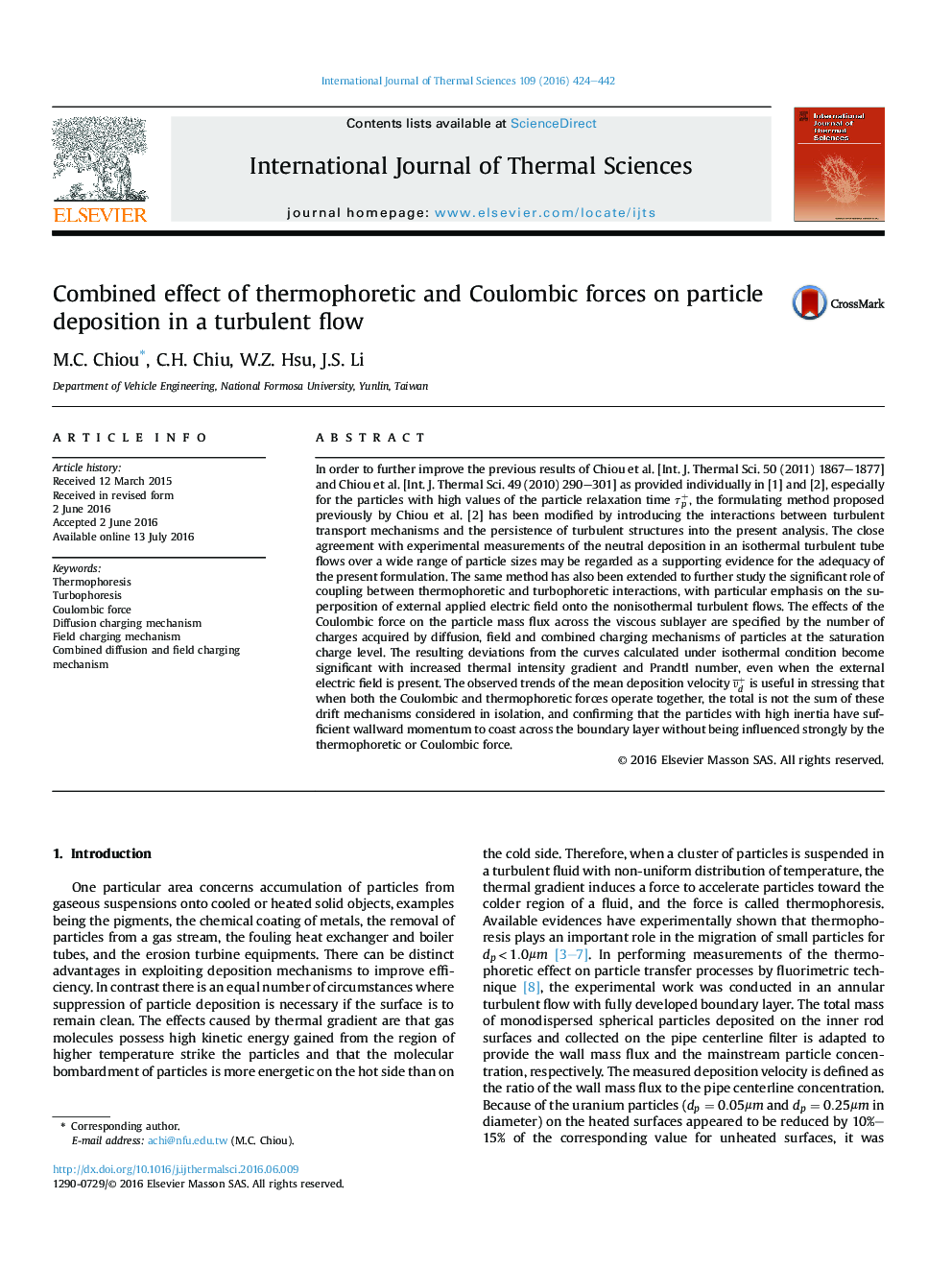| کد مقاله | کد نشریه | سال انتشار | مقاله انگلیسی | نسخه تمام متن |
|---|---|---|---|---|
| 668954 | 1458713 | 2016 | 19 صفحه PDF | دانلود رایگان |
• In order to further improve the previous results of Chiou et al. [1] and [2], especially for the particles with high values of the particle relaxation time τp+, the formulating method proposed previously [2] has been modified by introducing the interactions between turbulent transport mechanisms and the persistence of turbulent structures into the present analysis.
• The close agreement with experimental measurements of the neutral deposition in an isothermal turbulent tube flows over a wide range of particle sizes may be regarded as a supporting evidence for the adequacy of the present formulation.
• The same method has also been extended to further study the significant role of coupling between thermophoretic and turbophoretic interactions, with particular emphasis on the superposition of external applied electric field onto the nonisothermal turbulent flows.
• The effects of the Coulombic force on the particle mass flux across the viscous sublayer are specified by the number of charges acquired by diffusion, field and combined charging mechanisms of particles at the saturation charge level.
• The resulting deviations from the curves calculated under isothermal condition become significant with increased thermal intensity gradient and Prandtl number, even when the external electric field is present.
• The observed trends of the mean deposition velocity υ¯d+ is useful in stressing that when both the Coulombic and thermophoretic forces operate together, the total is not the sum of these drift mechanisms considered in isolation, and confirming that the particles with high inertia have sufficient wallward momentum to coast across the boundary layer without being influenced strongly by the thermophoretic or Coulombic force.
In order to further improve the previous results of Chiou et al. [Int. J. Thermal Sci. 50 (2011) 1867–1877] and Chiou et al. [Int. J. Thermal Sci. 49 (2010) 290–301] as provided individually in [1] and [2], especially for the particles with high values of the particle relaxation time τp+, the formulating method proposed previously by Chiou et al. [2] has been modified by introducing the interactions between turbulent transport mechanisms and the persistence of turbulent structures into the present analysis. The close agreement with experimental measurements of the neutral deposition in an isothermal turbulent tube flows over a wide range of particle sizes may be regarded as a supporting evidence for the adequacy of the present formulation. The same method has also been extended to further study the significant role of coupling between thermophoretic and turbophoretic interactions, with particular emphasis on the superposition of external applied electric field onto the nonisothermal turbulent flows. The effects of the Coulombic force on the particle mass flux across the viscous sublayer are specified by the number of charges acquired by diffusion, field and combined charging mechanisms of particles at the saturation charge level. The resulting deviations from the curves calculated under isothermal condition become significant with increased thermal intensity gradient and Prandtl number, even when the external electric field is present. The observed trends of the mean deposition velocity υ¯d+ is useful in stressing that when both the Coulombic and thermophoretic forces operate together, the total is not the sum of these drift mechanisms considered in isolation, and confirming that the particles with high inertia have sufficient wallward momentum to coast across the boundary layer without being influenced strongly by the thermophoretic or Coulombic force.
Journal: International Journal of Thermal Sciences - Volume 109, November 2016, Pages 424–442
